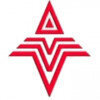Filter interviews by
Wind World Junior Engineer Interview Questions and Answers
6 Interview questions
Wind power generation converts wind energy into electricity using turbines, harnessing natural wind flow for sustainable energy.
Wind turbines capture kinetic energy from wind.
The rotor blades spin, turning a shaft connected to a generator.
The generator converts mechanical energy into electrical energy.
Electricity is transmitted through power lines to homes and businesses.
Example: Offshore wind farms utilize strong...
The supply process in a grid system involves generation, transmission, distribution, and consumption of electrical energy.
1. Generation: Electricity is generated at power plants using various sources like coal, natural gas, nuclear, or renewables (e.g., solar, wind).
2. Transmission: High-voltage transmission lines carry electricity over long distances to minimize energy loss.
3. Substations: Voltage is reduced at s...
A transformer is an electrical device that transfers electrical energy from one circuit to another through electromagnetic induction.
Transformers are used to increase or decrease the voltage of an alternating current (AC) power supply.
They consist of two coils of wire, called the primary and secondary coils, wrapped around a magnetic core.
When an AC current flows through the primary coil, it creates a magnetic fie...
Questions related to electrical engineering concepts such as transformers, AC and DC, motor, electromagnetic induction law, and Ohm's law.
Transformers are devices that transfer electrical energy from one circuit to another through electromagnetic induction.
AC (alternating current) changes direction periodically while DC (direct current) flows in one direction only.
A motor is a device that converts electrical energ...
Questions related to generators, power transmission, and thermocouples.
Types of generators include diesel, gas, wind, and hydroelectric.
India's generation capacity is around 370 GW.
Maximum power transmission in India is around 1,050 GW.
Transmission of maximum power is important to ensure efficient and reliable power supply.
A thermocouple is a device used to measure temperature and is commonly used in industrial ap...
Ohm's law states that the current through a conductor between two points is directly proportional to the voltage across the two points.
Ohm's law is represented by the equation V = IR, where V is voltage, I is current, and R is resistance.
The power formula is P = VI, where P is power, V is voltage, and I is current.
Ohm's law is used to calculate the resistance of a circuit and to determine the amount of current flo...
Wind World Junior Engineer Interview Experiences
6 interviews found
I appeared for an interview in Feb 2025.
(2 Questions)
- Q1. What is the process of wind power generation?
- Ans.
Wind power generation converts wind energy into electricity using turbines, harnessing natural wind flow for sustainable energy.
Wind turbines capture kinetic energy from wind.
The rotor blades spin, turning a shaft connected to a generator.
The generator converts mechanical energy into electrical energy.
Electricity is transmitted through power lines to homes and businesses.
Example: Offshore wind farms utilize strong sea ...
- Q2. What is the process of supply in a grid system?
- Ans.
The supply process in a grid system involves generation, transmission, distribution, and consumption of electrical energy.
1. Generation: Electricity is generated at power plants using various sources like coal, natural gas, nuclear, or renewables (e.g., solar, wind).
2. Transmission: High-voltage transmission lines carry electricity over long distances to minimize energy loss.
3. Substations: Voltage is reduced at substa...
Interview Preparation Tips

(3 Questions)
- Q1. 1. What is Transformers ? 2.five mejor difference between AC and DC ? 3.what is motor ? 4.electromagnetic induction law? 5.ohms law?
- Ans.
Questions related to electrical engineering concepts such as transformers, AC and DC, motor, electromagnetic induction law, and Ohm's law.
Transformers are devices that transfer electrical energy from one circuit to another through electromagnetic induction.
AC (alternating current) changes direction periodically while DC (direct current) flows in one direction only.
A motor is a device that converts electrical energy int...
- Q2. 1 personal interview?
- Q3. 1.Types of generator? 2.generation capacity in India? 3.maximum power transmission in India? 4.why are transmission maximum power? 5.what is thermocouple and use in where ?
- Ans.
Questions related to generators, power transmission, and thermocouples.
Types of generators include diesel, gas, wind, and hydroelectric.
India's generation capacity is around 370 GW.
Maximum power transmission in India is around 1,050 GW.
Transmission of maximum power is important to ensure efficient and reliable power supply.
A thermocouple is a device used to measure temperature and is commonly used in industrial applica...
Interview Preparation Tips
(2 Questions)
- Q1. What is transformer?
- Ans.
A transformer is an electrical device that transfers electrical energy from one circuit to another through electromagnetic induction.
Transformers are used to increase or decrease the voltage of an alternating current (AC) power supply.
They consist of two coils of wire, called the primary and secondary coils, wrapped around a magnetic core.
When an AC current flows through the primary coil, it creates a magnetic field th...
- Q2. What is ohm's law? Power formula?
- Ans.
Ohm's law states that the current through a conductor between two points is directly proportional to the voltage across the two points.
Ohm's law is represented by the equation V = IR, where V is voltage, I is current, and R is resistance.
The power formula is P = VI, where P is power, V is voltage, and I is current.
Ohm's law is used to calculate the resistance of a circuit and to determine the amount of current flowing ...
(1 Question)
- Q1. What you like i tell motor they told tell about motor
Interview Preparation Tips
First written test and two step interview.
Aks interview questions general.

(8 Questions)
- Q1. Where do you see yourself in 5 years?
- Ans.
In five years, I envision myself as a skilled engineer, leading projects and contributing to innovative solutions in the industry.
I aim to deepen my technical expertise, particularly in areas like automation and sustainable engineering.
I see myself taking on leadership roles, mentoring junior engineers, and fostering a collaborative team environment.
I plan to contribute to impactful projects, such as renewable energy s...
- Q2. What are your strengths and weaknesses?
- Q3. Tell me about yourself.
- Q4. Why should we hire you?
- Q5. Why are you looking for a change?
- Q6. Share details of your previous job.
- Q7. What is your family background?
- Q8. What are your salary expectations?
I applied via Campus Placement and was interviewed in Feb 2022. There were 2 interview rounds.
Technical knowledge and aptitude test after interview
Know me about your technical knowledge and your skill
Interview Preparation Tips
Interview Questionnaire
1 Question
- Q1. Question asked about ac and dc motor, generator, transformer, dfig, and on experience.
Top trending discussions






Interview questions from similar companies

I appeared for an interview in Oct 2017.
Interview Questionnaire
2 Questions
- Q1. acpcited package
- Q2. Package discussion
Interview Preparation Tips
Experience: This round few candets selected
Tips: Your selected for only experience candets
Round: Group Discussion
Experience: To avoid the water pollution.
Air pollution.sound pollution etc
Tips: Lettered
Duration: 1 hour
Round: HR Interview
Experience: Cleared the final package
Tips: Work experience
Skills: Break Down Analysis

Interview Questionnaire
1 Question
- Q1. Normal question about personality and job related
Interview Preparation Tips
Experience: Interview was going smoothly & all questions was related my job so it's was easy for me.
Tips: Good knowledge about of wind turbine
Duration: 2 hours
Total Questions: 25
Round: HR Interview
Experience: Interview was completed so easy
Tips: Required nice personality and confidence is must required

I applied via Walk-in and was interviewed before Jun 2019. There was 1 interview round.
Interview Questionnaire
3 Questions
- Q1. Star delta connection
- Ans.
Star delta connection is a method of connecting three-phase motors to reduce starting current.
Used for high power motors
Reduces starting current
Requires six leads
Switches from star to delta during operation
Used in industries such as oil and gas, mining, and manufacturing
- Q2. Single phase induction moto
- Q3. Present sence releted question like checking your loyality
Interview Preparation Tips

I applied via Walk-in and was interviewed before Jun 2021. There were 2 interview rounds.
(2 Questions)
- Q1. What is safety follow in work in height
- Ans.
Safety measures to be followed while working at heights
Use of proper personal protective equipment (PPE) like harness, helmet, etc.
Proper training and certification of workers
Regular inspection and maintenance of equipment and tools
Proper communication and coordination among workers
Adherence to safety guidelines and regulations
Proper risk assessment and hazard identification
Use of guardrails, safety nets, and other fal...
- Q2. How to work wind turbines
- Ans.
Wind turbines convert wind energy into electrical energy.
Wind turbines consist of blades, a rotor, a generator, and a tower.
The blades capture the wind and turn the rotor.
The rotor spins the generator, which produces electricity.
The tower supports the turbine and raises it above the ground for better wind access.
Wind turbines require consistent wind speeds of at least 6-9 mph to generate electricity.
The electricity gen...
(1 Question)
- Q1. Discuses about Salery
- Ans.
Salary for Junior Engineer varies based on experience and industry standards.
Salary can range from $50,000 to $80,000 per year depending on location and company
Experience and education level can also impact salary
Research industry standards and negotiate salary during the hiring process
Interview Preparation Tips
Wind World Interview FAQs
Some of the top questions asked at the Wind World Junior Engineer interview -
Tell us how to improve this page.
Wind World Interviews By Designations
- Wind World Electrical Engineer Interview Questions
- Wind World Junior Engineer Interview Questions
- Wind World Assistant Engineer Interview Questions
- Wind World Senior Engineer Interview Questions
- Wind World Site Incharge Interview Questions
- Wind World Junior Engineer Electrical Interview Questions
- Wind World Operation & Maintenance Engineer Interview Questions
- Wind World Supervisor Interview Questions
- Show more
Interview Questions for Popular Designations
Overall Interview Experience Rating
based on 5 interview experiences
Difficulty level
Duration
Junior Engineer Interview Questions from Similar Companies
Wind World Junior Engineer Reviews and Ratings
based on 87 reviews
Rating in categories
|
Assistant Engineer
282
salaries
| ₹2.4 L/yr - ₹5.8 L/yr |
|
Junior Engineer
273
salaries
| ₹1.5 L/yr - ₹4.3 L/yr |
|
Engineer
197
salaries
| ₹2.5 L/yr - ₹6.9 L/yr |
|
Senior Engineer
157
salaries
| ₹3.5 L/yr - ₹9.5 L/yr |
|
Electrical Engineer
149
salaries
| ₹2.2 L/yr - ₹6.8 L/yr |

Suzlon Group

NTPC

Torrent Power

Tata Power
- Home >
- Interviews >
- Wind World Interview Questions















